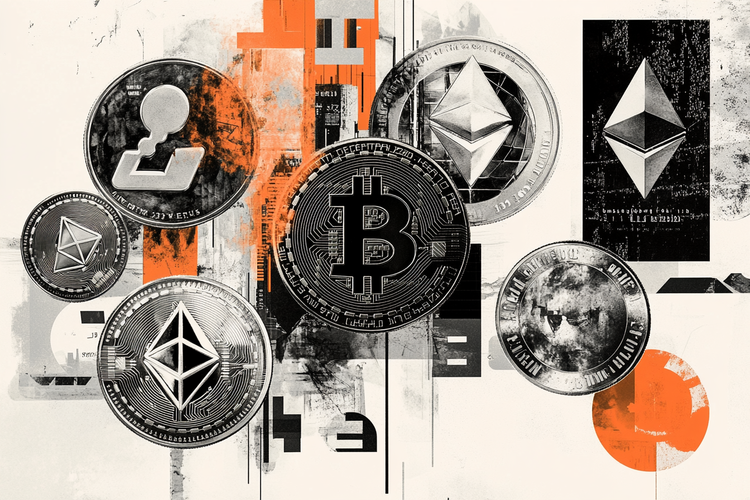Tokenization Poised to Capture 5% of $257 Trillion Global Markets—Bitwise Predicts seismic Shift

Wall Street’s next gold rush? Blockchain just bulldozed the gates.
### The $12.85 Trillion Tokenization Tipping Point
Forget nibbling at the edges—Bitwise forecasts tokenized assets will swallow 5% of global stocks and bonds. That’s $12.85 trillion flooding into blockchain rails while traditional finance scrambles to retrofit its 19th-century plumbing.
### Death by Decimal Points
Institutions finally woke up: fractionalized ownership cuts settlement times from days to minutes. The real shocker? Even Goldman Sachs now admits blockchain ledgers beat their spreadsheets—though they’ll still charge you 2% for the privilege.
### The Cynic’s Corner
Watch legacy finance ‘innovate’ by slapping ‘Web3’ labels on the same predatory fees. Tokenization won’t kill middlemen—just rebrand them as ‘validators’.
Institutional attention on tokenized products could outpace Bitcoin and stablecoins
The surge in real-world asset (RWA) tokenization is expected to accelerate in the second half of 2025, potentially impacting the prices of related assets, according to Bitwise executives.
"Stocks are a $117 trillion market. Bonds are a $140 trillion market. That's $257 trillion up for grabs in the tokenization wars — and that's before we even get to more esoteric assets," they wrote.
The executives projected that the tokenization sector could attract 1-5% of the combined stock and bond markets' $257 trillion market cap over the next few years. The prediction follows BlackRock CEO Larry Fink's annual shareholder' letter for 2025, in which he stated that "every stock, every bond, every fund — every asset — can be tokenized."
BlackRock launched its tokenized fund, known as the BlackRock USD Institutional Digital Liquidity Fund (BUIDL), in March 2024 on the ethereum blockchain. BUIDL quickly grew to surpass $1 billion in assets under management (AUM) within its first year, becoming the fastest tokenized fund to achieve the milestone.
Bitwise executives noted that Fink's prediction, if correct, could spark a 4,000x growth in the tokenized assets market.
"It seems possible, and it WOULD translate into trillions of dollars," the executives wrote, adding that the rise would outpace Bitcoin's (BTC) market cap. They stated it would also beat predictions for the stablecoin market within the next few years. Several executives project that the stablecoin market could surge to $2 trillion by 2028, while Bernstein forecasts a growth of $4 trillion within the next decade.
"$2 trillion would be chump change compared to tokenization, marking less than 1% of Larry Fink's tokenization dream," Bitwise executives added.
Despite the anticipated momentum across the tokenization market, the executives mentioned that it would still take more than a decade before the "majority of stock and bond trading happens on-chain."
However, the immediate impact is expected to have a positive effect on blockchain protocols used in tokenization, including Ethereum (ETH), Solana (SOL), chainlink (LINK), and Ondo (ONDO), they said. These blockchain protocols have been at the forefront of real-world asset tokenization in recent months, with firms such as JPMorgan, Franklin Templeton, Robinhood, Kraken, and Coinbase leveraging their networks to launch tokenized products.
While Robinhood and Kraken offer EU customers tokenized products, Coinbase seeks regulatory approval to launch similar products in the US.
Meanwhile, Securities & Exchange Commission (SEC) Commissioner Hester Peirce released a statement on Wednesday, noting that "tokenized securities are still securities."
Peirce urged US issuers to adhere to federal securities laws when launching these products on-chain. She also added that the legal requirements for on and off-chain versions of instruments are the same. Commissioner Peirce also encouraged market participants developing tokenized products to engage directly with the SEC and its staff.
She added that the Commission is open to working with industry stakeholders to create exemptions and update outdated rules when new technologies warrant regulatory adjustments.

